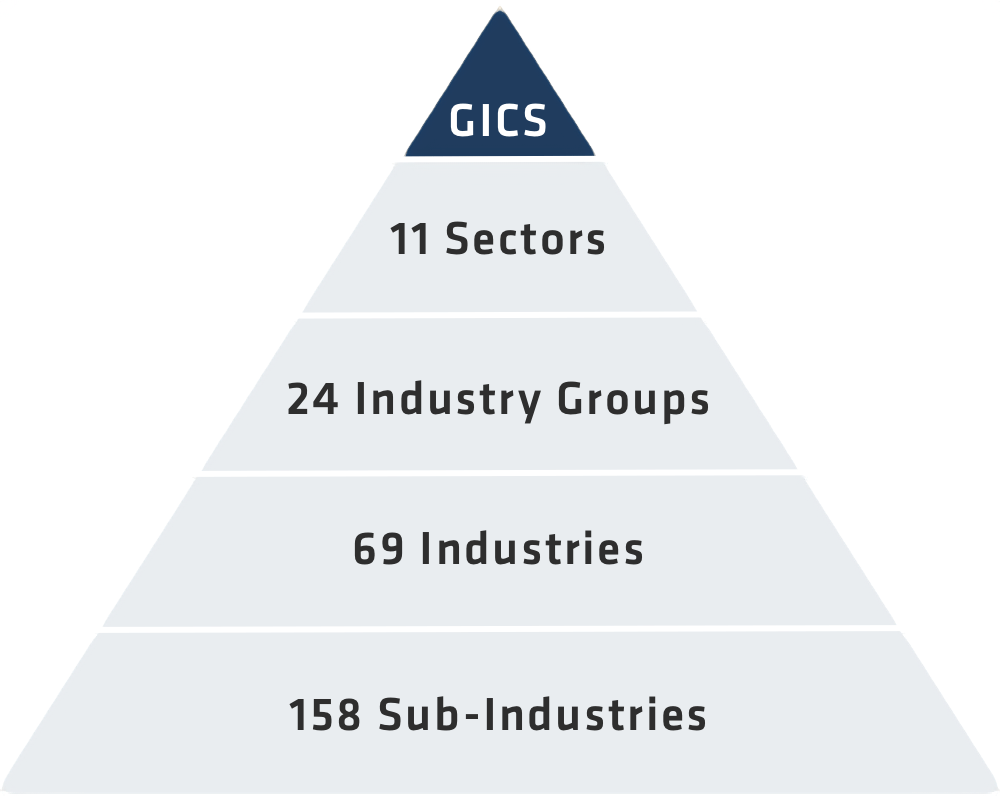ASX Sectors
The Australian share market is broken up into 11 Sectors, 24 Industry Groups, 69 Industries and 158 Sub-Industries.
Companies are categorised according to their primary business activity following the Global Industry Classification Standard (GICS). As most established markets use GICS, investors can accurately compare the performance of Australian sectors/industries to those of other countries.
Australia's 11 GICS sectors each have a benchmark index that tracks the performance of ASX-listed companies in that sector.
The constituents of the ASX sector indices are selected from the S&P/ASX 200. As the pool of eligible ASX stocks is relatively small, some sector indices only contain a handful of companies.
Note: Australian investors generally use the term "sector” when discussing a company's activity. Confusingly, it’s common for investors to use the slang term “industry” when they’re actually referring to a company’s “sector”.

Consumer Discretionary ^XDJ
Movement
1 Year Return
Companies that tend to be most sensitive to economic cycles. E.g. Media, retailing and household durable goods.
Consumer Staples ^XSJ
Movement
1 Year Return
Companies that are resilient to economic cycles. E.g. Food, beverage and non-durable household goods.
Energy ^XEJ
Movement
1 Year Return
Companies whose primary business centres around oil, gas and coal. E.g. Drilling equipment, energy exploration and transportation.
Financials ^XFJ
Movement
1 Year Return
Companies involved in the financial services industry. E.g. Banking, asset management and insurance.
Health Care ^XHJ
Movement
1 Year Return
Companies involved in the supply or production of health care services and pharmaceuticals. E.g. Drug developers and healthcare facilities.
Industrials ^XNJ
Movement
1 Year Return
Companies involved in the manufacture or distribution of capital goods. E.g. Machinery, airlines and defence.
Real Estate ^XRE
Movement
1 Year Return
Companies involved in Real Estate. E.g. REITs, property development and management.
Information Technology ^XIJ
Movement
1 Year Return
Companies that develop software and computer equipment. E.g. Internet businesses, semiconductors and online applications.
Materials ^XMJ
Movement
1 Year Return
Companies involved in commodity related manufacturing industries. E.g. Glass, paper and steel producers.
Communication Services ^XTJ
Movement
1 Year Return
Companies that provide communication services through fixed line, wireless or cable. E.g. Phone carriers.
Utilities ^XUJ
Movement
1 Year Return
Companies that operate or distribute power, gas and water. E.g. Major electricity retailers.
Editor's Note
Be wary of any data source (including Market Index) that reports fundamentals for a whole sector or market. The values can be significantly skewed.
Some sectors only contain a handful of companies (e.g. Communication Services) so there is little depth.
Weighted averages can also be skewed by just a few companies. For example, Telstra Corporation (TLS) accounts for 57% of the S&P/ASX 200 Communication Services sector (June 2022). The TLS dividend yield will significantly affect the overall sector’s yield.